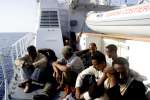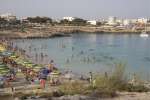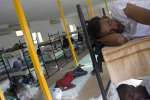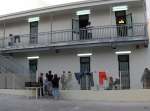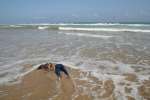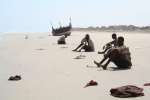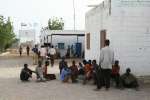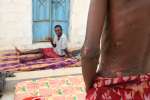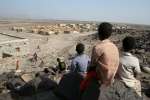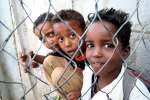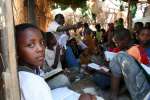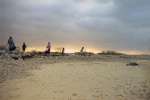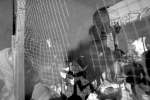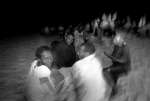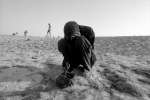Mixed Migration Expert Roundtables: 10-Point Plan Expert Roundtable No.2: "Different People - Different Needs", Tunis, Tunisia, 6-8 July 2009
Migration, October 2009
The second expert roundtable on UNHCR's 10-Point Plan of Action took place in Tunis on 6-8 July, 2009. The theme of the meeting was "Different People, Different Needs" and the gathering was jointly convened by UNHCR, the International Organization for Migration and the International Federation of Red Cross and Red Crescent Societies. It was funded by the European Commission. Around 40 experts from governmental and non-governmental organizations, academia and the three hosting organizations, discussed the best ways to cooperate to identify and protect displaced people with specific needs, especially women and children, soon after arrival.
Below is a copy of the binder distributed at the roundtable as well as documents generated during and after the meeting.
CONTENTS
1. Main roundtable documents
2. Background information on Mixed Migration
- UNHCR, A 10 Point Plan of Action for Refugee Protection and Mixed Migration
[English] [Français] - UNHCR's 10-Point Plan in Central America, Western Africa, Eastern Africa and Southern Asia – a three year project
- UNHCR 10-Point Plan Handbook:
- UNHCR, High Commissioner's Dialogue on Protection Challenges – Theme: Refugee Protection, Durable Solutions and International Migration – Chairman's Summary, December, 2007
- IOM, Discussion Note – Mixed Migration Flows, 2008 [English] [Français]
- International Federation of Red Cross and Red Crescent Societies – Resolution 5: International migration (CD/07/R5). Council of Delegates of the International Red Cross and Red Crescent Movement, Geneva, 23-24 November 2007 [English]
3. Backgound material for the working sessions
- International Convention on the Protection of the Rights of All Migrant Workers and Members of Their Families Adopted by General Assembly resolution 45/158 of 18 December 1990
- UN General Assembly, Protocol to Prevent, Suppress and Punish Trafficking in Persons, Especially Women and Children, Supplementing the United Nations Convention against Transnational Organized Crime, 15 November 2000, selected articles
- IOM Screening and Assistance forms for the protection of Victims of Trafficking:
- Convention on the Rights of the Child of 1989 (external links) [English] [Français]
- UNHCR Guidelines on Formal Determination of the Best Interests of the Child, May 2008 [English] [Français]
- UNHCR, Executive Committee, Conclusion No. 107 (LVIII), Conclusion on Children at Risk, October 2007
- Selected Articles from the UN Convention relating to the status of refugees (1951) and its Protocol (1967) [English] [Français]
- UNHCR, Executive Committee, Conclusion on reception of asylum-seekers in the context of individual asylum systems, 8 October 2002. No. 93 (LIII) – 2002
- UNHCR, Global Consultations on International Protection/Third Track: Reception of Asylum-Seekers, Including Standards of Treatment, in the Context of Individual Asylum Systems, 4 September 2001. EC/GC/01/17
- UNHCR, Guidelines on International Protection No. 7: The Application of Article 1A(2) of the 1951 Convention and/or 1967 Protocol Relating to the Status of Refugees to Victims of Trafficking and Persons At Risk of Being Trafficked, 7 April 2006. HCR/GIP/06/07
- UNHCR, Executive Committee, Conclusion No. 105 (LVII), Conclusion on women and girls at risk, October 2006
4. Conference Poster









